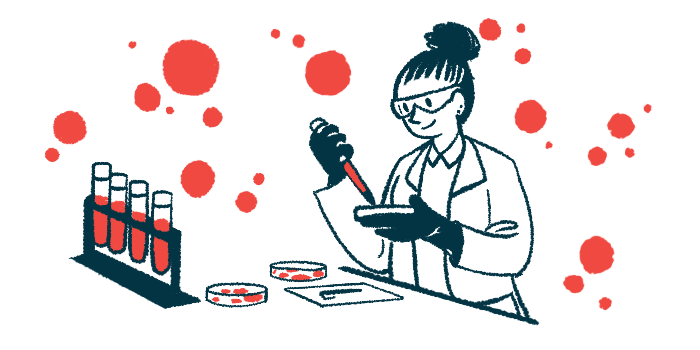CLN5 May Be Important Target in Treating Batten, Study Finds
KCTD7 mutations lead to excessive amounts of the protein, researchers say
Written by |

Mutations in the gene KCTD7, known to cause a rare form of Batten disease, lead to the excessive accumulation in cells of a protein called CLN5, which may be an important target for treating the disorder, researchers said.
Defects in CLN5 are known to cause other types of Batten disease, the researchers said.
The study, “KCTD7 mutations impair the trafficking of lysosomal enzymes through CLN5 accumulation to cause neuronal ceroid lipofuscinoses,” was published in Science Advances.
Mutations in the gene KCTD7, also known as CLN14, cause a rare form of Batten disease called CLN14 disease or progressive myoclonic epilepsy type 3, which is characterized by seizures and developmental regression that occur within the first two years of life.
Like other types of Batten disease, CLN14 is characterized by dysfunction of the lysosome — the cellular “recycling center” where complex molecules are broken down into simpler components that can be reused. This ultimately leads to the toxic buildup of a substance called lipofuscin. However, the molecular mechanisms of how KCTD7 mutations cause lysosome dysfunction are not completely understood.
Scientists at Fudan University in China conducted a series of experiments in cell models to learn more about the function of the KCTD7 gene and the protein that it encodes, also called KCTD7.
The team first showed that knocking out KCTD7 led to lysosomal dysfunction and subsequent lipofuscin buildup similar to what is seen in CLN14 disease. Other disease-characteristic cellular deficits, such as abnormal activation of the unfolded protein response, also were noted.
Lysosomes normally contain a number of specialized enzymes that help to chop up complex molecules. Further experiments showed that cells lacking KCTD7 did not have altered levels of lysosomal enzymes overall, but levels of several of these enzymes were markedly decreased in the lysosomes themselves. This suggests that the KCTD7 protein helps certain lysosomal enzymes get to the lysosome, where they need to be in order to function correctly.
KCTD7 interaction with CLN5
The scientists next looked for proteins that KCTD7 interacts with and found that KCTD7 interacts with CLN5. This protein is known to help coordinate the movement of lysosomal enzymes within cells, and mutations that inhibit the functionality of the CLN5 protein cause another form of Batten disease.
In a battery of further experiments, the researchers demonstrated that KCTD7 is part of a molecular complex that normally ubiquitinates CLN5 — a process in which certain molecular “tags” are attached to the CLN5 protein that mark it for destruction. Reducing KCTD7 levels thus ultimately led to an increase in CLN5 levels. Mutations in KCTD7 that are known to cause Batten disease in humans similarly led to an increase in CLN5 levels.
“At first glance, it seems counterintuitive that both CLN5 accumulation induced by KCTD7 deficiency and CLN5 loss-of-function mutations independently lead to [Batten disease] subtypes,” the researchers wrote.
However, cellular experiments showed that either increasing CLN5 levels or knocking out the protein actually led to similar Batten-like defects in lysosomal function.
“Together, our findings suggest that KCTD7 deficiency-induced lysosomal defects are caused by CLN5 accumulation. Moreover, loss-of-function mutations of CLN5 caused similar results,” the researchers wrote.
Further experiments indicated that, when CLN5 is overexpressed, the molecular machinery that usually helps it transport enzymes through to the lysosome basically becomes gummed up with the excess protein, reducing the amount of CLN5 that ultimately gets to lysosomes.
“Considering the previous reports that some [forms of Batten disease] are attributed to CLN5 mutations collectively with our new finding of CLN5 overexpression in KCTD7-mutated [Batten disease], functional control of CLN5 in balance might be an important target for effective [Batten disease] treatment,” the researchers concluded.





